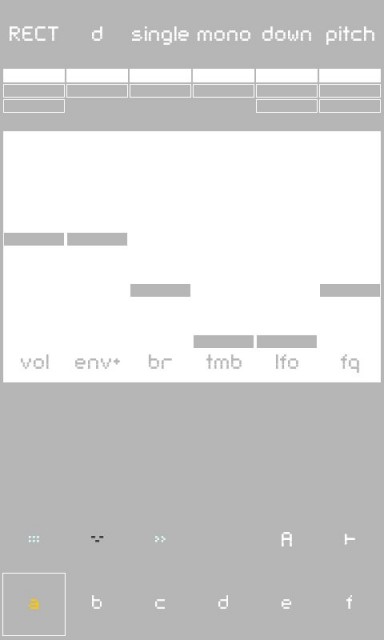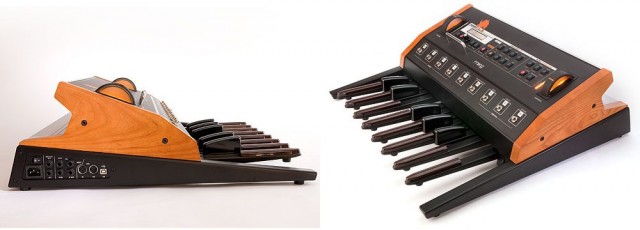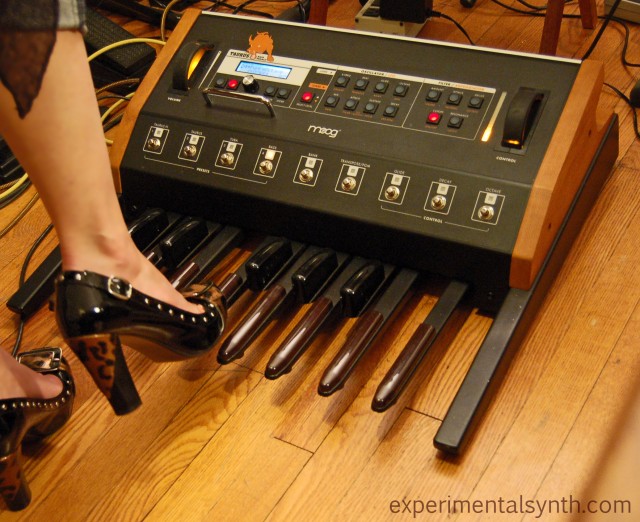Chris Stack, maker of the Experimental Synth series (and formerly of Moog Music), is back with new ideas for what to do with some great gear. Analog and digital meet here: everything from Nanoloop running on an Android handheld to the mighty Moog Taurus 3 pedal make appearances. That means that you ought to be able to glean some ideas from Chris’ sounds whatever your tastes and whatever your gear collection. -PK
The Moog Taurus 3 springs from a very iconic lineage. Because of that rich history, it’s easy to type-cast it and not fully explore the full sonic potential it presents. The inclusion of volume, pitch, filter and gate control voltage inputs, coupled with a MIDI-syncable arpeggiator can take it far outside its usual low-end drone duties. This video just scratches the surface of what is possible. Its purpose is to encourage you to “step outside”.
The first example shows the Taurus 3 filter being modulated by a Make Noise René: a very fun analog step sequencer with some interesting Cartesian (X & Y clock) capabilities. The CV inputs on the Taurus 3 make it a great add-on for modular synthesis set-ups and there are an almost unlimited number of interesting things you can connect to them. The René is definitely at the exotic end of the spectrum but it is still extremely useful. It’s great to have that extra level of control available at hand level too. Ed.: See the René in action below. I was fortunate enough to see this at our little meet-up in Austin during South by Southwest.
Due to personal preference, I tend to use things like the René to control filter cutoff instead of pitch. I enjoy the ability to play the notes while synchronized filter events occur. It gives a pleasing (at least to me) mix of tight-sequenced and loose-live feel.
The second example takes things even farther afield. I first discovered the Android app Nanoloop in a recent CDM article. Its useful features and sleek user interface made it an instant favorite.

Here I used one of my favorite production tricks: processing the Droid audio through a Moog MF-101 (Moogerfooger) low pass filter. In addition to nicely warming up the Droid, it also created a control voltage (CV) proportional to the volume of the input audio. In other words, the CV mirrored the volume envelope of the beat Nanoloop created.
This is an incredibly powerful tool. When that CV controls something interesting… say that filter on a Taurus 3, some very interesting synchronizations occur, all completely in the analog realm. When the Droid outputs a loud kick, the CV output on the Moogerfooger goes high and the Taurus 3 filter opens wide. As soon as the kick sound is over, the CV goes low and the filter shuts. Mid-volume sounds open the filter midway. These are not discrete steps. The CV hugs the volume contour of the input audio and outputs a nicely wiggly, but tightly synchronized analog control signal.
This is conceptually very similar to side-chaining and the great thing about it is that the filter modulations created will follow any changes in the rhythm. Sudden shift in tempo coupled with a time signature change to 11/8… no problem! I haven’t tested it but this should also work with a live drummer. Of course, there is no rule that says you have to connect the CV to a filter input. You could connect it to volume or if you’re feeling really avant-garde, to pitch.
This technique works best with when the beat is not too busy and has some definite dynamic peaks and valleys. A bit of gain adjusting and tweaking of the base filter cutoff frequency on the target synth (the Taurus 3 in this case) are sometimes needed, but the unique results more than make up for this little bit of work. Higher resonance settings on the target synth will make the filter modulations more noticeable. If you have a synth with CV inputs but without MIDI, this is a great way to get it dancing to your beat.
The last example shows a somewhat basic MIDI-synced arpeggiator application. By using your foot to transpose the arpeggiation, you can create quite a sophisticated soundscape while your hands are free for other musical mayhem.
All of these applications are fairly basic. Imagine doing any of them while using the Taurus 3’s USB connectivity to simultaneously control Ableton Live, or while it is part of a monster MIDI stack…
Lastly, remember to wear sensible shoes.
But wait — there’s more! Some more techniques from Chris show off similar ideas.
Continuing the sequencing ideas here, a look at what happens as you combine Theremins, step sequencers, and filters:
…or mix multiple control voltages for creating tempo-synced effects, via the Moog CP-251 control processor:
And, of course, if you do get some synths, you have to have a party:
Find Chris on YouTube:
http://www.youtube.com/user/experimentalsynth
…or Facebook:
http://www.facebook.com/experimentalsynth
Lots going on, so if you’ve got questions, fire away here!

